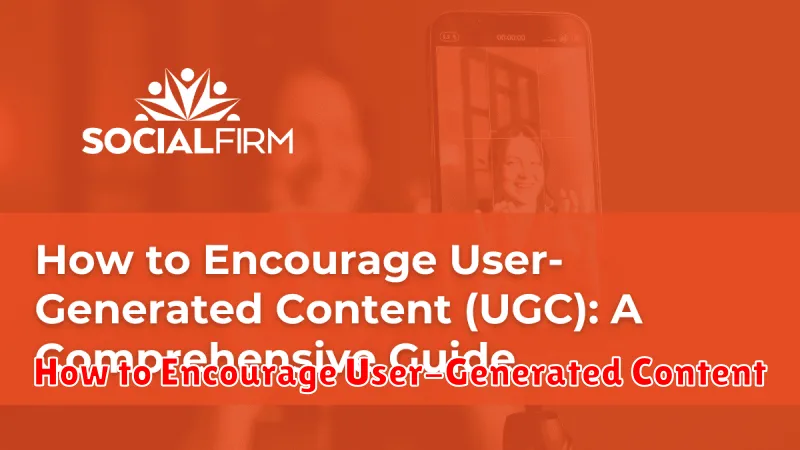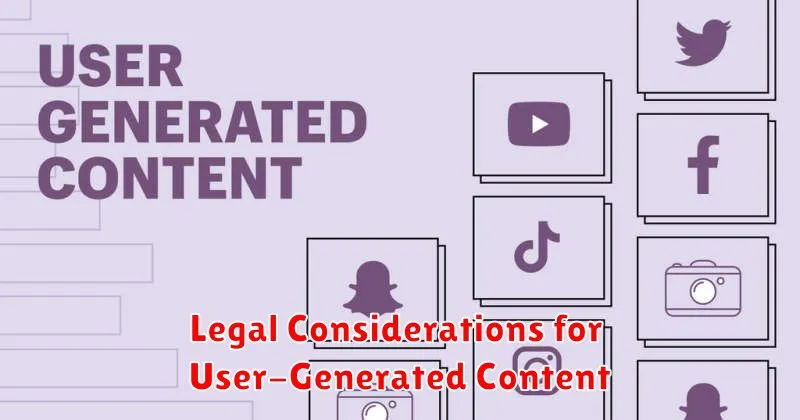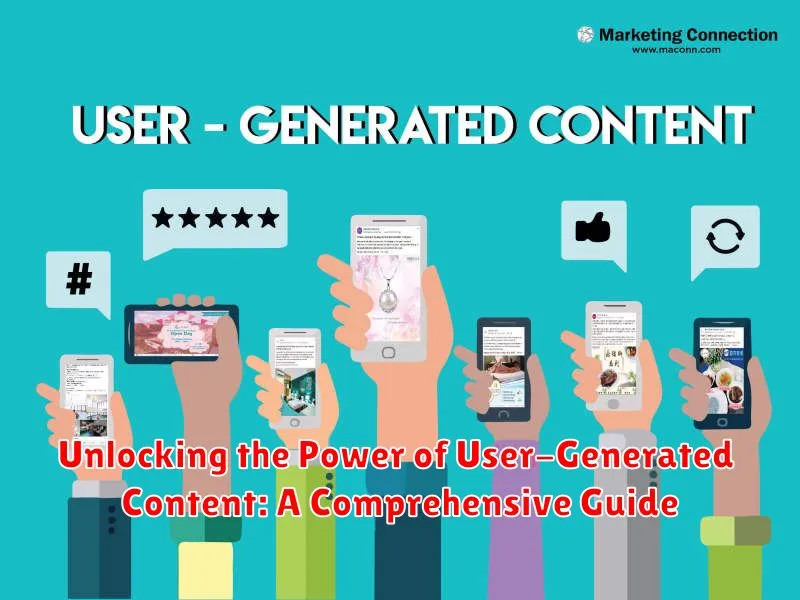In today’s digital landscape, user-generated content (UGC) has emerged as a powerful force, transforming how businesses connect with their audiences and drive growth. This comprehensive guide delves into the multifaceted world of UGC, exploring its significance in building brand trust, fostering authentic engagement, and amplifying marketing reach. From understanding the core principles of effective UGC strategies to navigating the legal and ethical considerations, this guide provides a roadmap for harnessing the immense potential of user-generated content.
Whether you’re a seasoned marketer looking to optimize your UGC campaigns or a newcomer seeking to integrate user-generated content into your marketing mix, this guide offers valuable insights and actionable strategies. Discover how to effectively leverage user-generated content across various platforms, from social media to e-commerce, and learn how to cultivate a thriving community of brand advocates who contribute authentic and engaging content. Unlock the power of user-generated content and transform your marketing efforts with this comprehensive resource.
What is User-Generated Content (UGC)?
User-generated content (UGC) refers to any form of content, such as images, videos, text, and audio, that is created and shared by individuals, rather than brands or businesses. It’s content created by users of a product or service, and often shared on social media platforms, online forums, review sites, or other online channels.
Key characteristics of UGC include its organic nature and its reflection of genuine user experiences. It is typically created voluntarily, driven by personal interest or enthusiasm, rather than being commissioned or paid for by a company. This authenticity is a core element of UGC, lending it a level of credibility that traditional marketing materials often lack.
UGC can take many forms. Think of a customer posting a photo of a meal they enjoyed at a restaurant, writing a review of a product they purchased, or creating a video tutorial showcasing how they use a particular software. All of these examples represent different facets of UGC.
Why is UGC Important for Brands?
User-generated content (UGC) offers numerous advantages for brands, significantly impacting their marketing efforts and overall success. It builds trust and credibility. Consumers tend to trust fellow consumers more than traditional advertising. UGC provides authentic perspectives and experiences, which resonate more deeply with potential customers.
UGC also increases brand engagement and reach. When customers share their experiences, they expose your brand to their network, expanding your reach organically. This increased visibility can lead to greater brand awareness and a larger potential customer base. It’s a powerful tool for driving conversions. Seeing real people enjoying your product or service can be highly persuasive, nudging potential buyers towards a purchase decision. UGC often leads to higher conversion rates compared to traditional marketing materials.
Furthermore, UGC provides valuable insights into customer preferences. By analyzing UGC, brands can gain a deeper understanding of what their customers like, dislike, and expect. This information can be used to improve products, services, and marketing strategies. Finally, UGC is generally cost-effective. Compared to creating professional content, UGC is significantly less expensive to obtain, making it a valuable asset for businesses of all sizes.
Different Types of User-Generated Content
User-generated content comes in a variety of forms, each offering unique advantages for brands. Understanding these different types is crucial for developing a comprehensive UGC strategy.
Reviews: Customer reviews are a powerful form of UGC, influencing purchasing decisions and building trust. They provide valuable feedback and social proof.
Social Media Posts: Content shared on platforms like Instagram, Facebook, and X (formerly Twitter), including text posts, images, and videos, can be leveraged to showcase a brand organically.
Videos: From unboxing videos to product demonstrations, user-created videos offer engaging and dynamic content that resonates with audiences.
Images: Customer photos featuring products in real-life settings provide authenticity and inspire other potential buyers.
Blog Posts and Articles: In-depth reviews and experiences shared on personal blogs provide detailed perspectives and can drive traffic to a brand’s website.
Testimonials: Direct quotes from satisfied customers build credibility and highlight the positive aspects of a product or service.
Question and Answer Forums: User participation in forums provides valuable insights into customer needs and concerns, while also offering opportunities for community building.
How to Encourage User-Generated Content

Generating a steady stream of valuable UGC requires active encouragement and engagement with your audience. Run contests and giveaways that incentivize content creation aligned with your brand. Offer prizes that resonate with your target audience to boost participation. Create a dedicated hashtag specific to your campaign, making it easy for users to share and find related content.
Make it easy to participate. Clearly explain guidelines and expectations for content submissions. Streamline the process for users to submit their photos, videos, and text. Feature UGC prominently. Showcase user-generated content on your website, social media platforms, and even in your marketing materials. Public acknowledgment encourages continued participation and builds community.
Interact with user contributions. Respond to comments, answer questions, and show genuine appreciation for the content shared. Active engagement fosters a sense of community and strengthens the brand-consumer relationship. Partner with influencers or brand ambassadors. Collaborating with relevant individuals can significantly expand your reach and encourage content creation within their established communities.
Examples of Effective UGC Campaigns
Examining successful UGC campaigns provides valuable insights for developing your own strategy. Here are a few examples:
Starbucks #RedCupContest: This annual campaign encourages customers to decorate their Starbucks red holiday cups and share photos on social media using the designated hashtag. The contest generates massive engagement and brand awareness, showcasing user creativity tied to a recognizable product.
GoPro’s user-submitted content: GoPro relies heavily on user-generated content to showcase the capabilities of its cameras. By featuring customer videos and photos on their website and social media, GoPro effectively demonstrates the product’s versatility and inspires others to create their own adventures.
Sephora’s Beauty Insider Community: Sephora encourages customers to share product reviews, makeup looks, and tutorials within their online community. This platform fosters engagement, provides valuable social proof for potential buyers, and helps Sephora understand customer preferences.
Best Practices for Using UGC in Marketing
Leveraging user-generated content effectively requires a strategic approach. Always ask for permission before reusing any UGC. Clearly communicate how you intend to use their content and obtain explicit consent. This builds trust and respects the content creator’s ownership.
Give credit where credit is due. Properly attribute the original creator whenever you share UGC. Tagging them on social media or mentioning their name alongside their content shows appreciation and encourages further engagement.
Maintain authenticity. Resist the urge to overly edit or alter UGC. Minor adjustments for clarity are acceptable, but preserving the original feel and message is crucial. Authenticity is a key component of UGC’s appeal.
Establish clear guidelines. If you’re running a UGC campaign, provide clear instructions and guidelines for participants. This ensures the content aligns with your brand and messaging. Consider using a branded hashtag to make it easier to find and collect relevant content.
Integrate UGC across multiple platforms. Don’t limit UGC to a single channel. Share it across your website, social media profiles, email marketing campaigns, and even in offline materials like brochures or in-store displays.
Measuring the Success of Your UGC Strategy
Measuring the effectiveness of your user-generated content strategy is crucial for understanding its impact and making improvements. Key Performance Indicators (KPIs) will vary based on your specific goals, but some common metrics provide valuable insights.
Reach and Awareness: Track metrics like the number of UGC posts created, social media impressions, and reach. These indicators demonstrate how far your UGC is spreading and its potential to expose your brand to new audiences.
Engagement: Measure likes, comments, shares, and other interactions with UGC. High engagement signifies that your audience resonates with the content and finds it valuable. Monitor engagement rates over time to assess campaign performance and audience sentiment.
Website Traffic and Conversions: If UGC is used on your website, monitor the traffic it generates and its impact on conversion rates like purchases or sign-ups. This helps establish a direct link between UGC and business outcomes.
Content Performance: Analyze which types of UGC perform best in terms of reach, engagement, and conversions. This information can guide future UGC campaigns and content creation strategies.
Common Mistakes to Avoid with UGC
While user-generated content offers incredible benefits, some common pitfalls can hinder its effectiveness. Avoiding these mistakes is crucial for maximizing your UGC strategy.
One frequent error is lack of a clear UGC strategy. Without defined goals and guidelines, campaigns can feel disjointed and fail to resonate with the target audience. Ignoring legal considerations is another significant oversight. Properly addressing copyright and usage rights is essential to avoid legal issues.
Insufficient moderation can also lead to problems. Failing to monitor content for inappropriate or off-brand material can damage your brand reputation. Similarly, not responding to UGC can alienate contributors and discourage future participation. Acknowledgement and interaction are key to building a strong community around your brand.
Finally, forcing UGC can appear inauthentic and create a negative perception. Focus on fostering organic engagement and creating genuine opportunities for user participation.
Legal Considerations for User-Generated Content

When leveraging user-generated content (UGC), it’s crucial to navigate the legal landscape carefully. Copyright is a primary concern. Ensure you understand the rights associated with the content and obtain necessary permissions from the creators before using their work in your marketing materials. This often involves a clear process for requesting rights, such as a documented agreement or terms and conditions.
Right of publicity and privacy are also important considerations. Individuals have the right to control how their image and likeness are used commercially. Obtain consent before featuring individuals in your UGC campaigns. Be mindful of children’s privacy and obtain parental consent when necessary.
Trademarks and false advertising regulations also apply to UGC. Ensure the content doesn’t infringe on existing trademarks or make false or misleading claims about your products or services. Monitor UGC for potentially problematic content and have a process for addressing these issues quickly.
Finally, clearly define your terms of service regarding UGC. Outline the rights you are granted when users submit content, how you plan to use it, and any restrictions that apply. These terms should be readily accessible and easy to understand.

